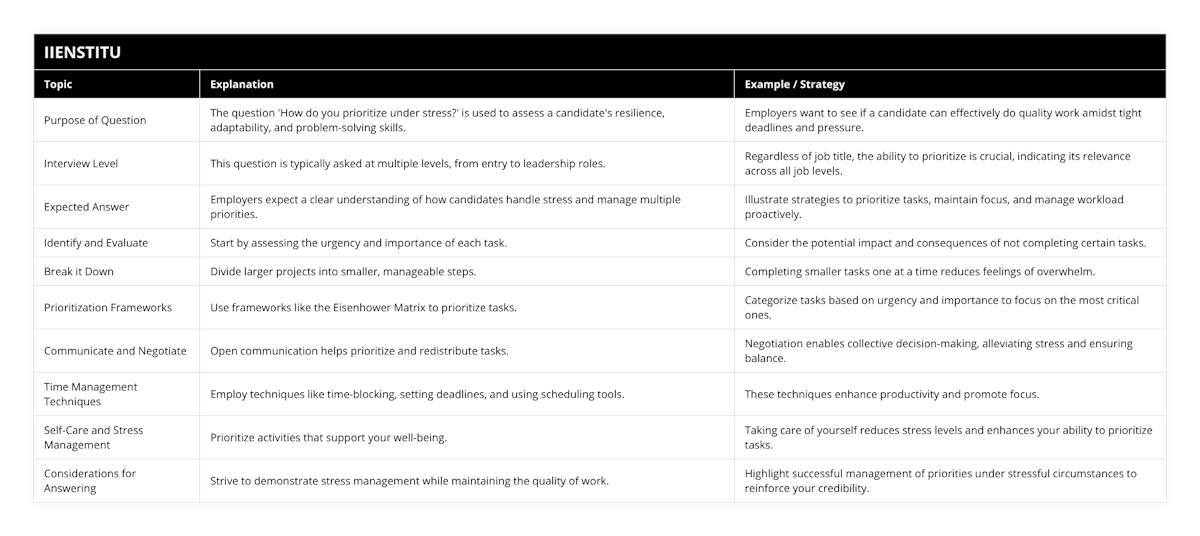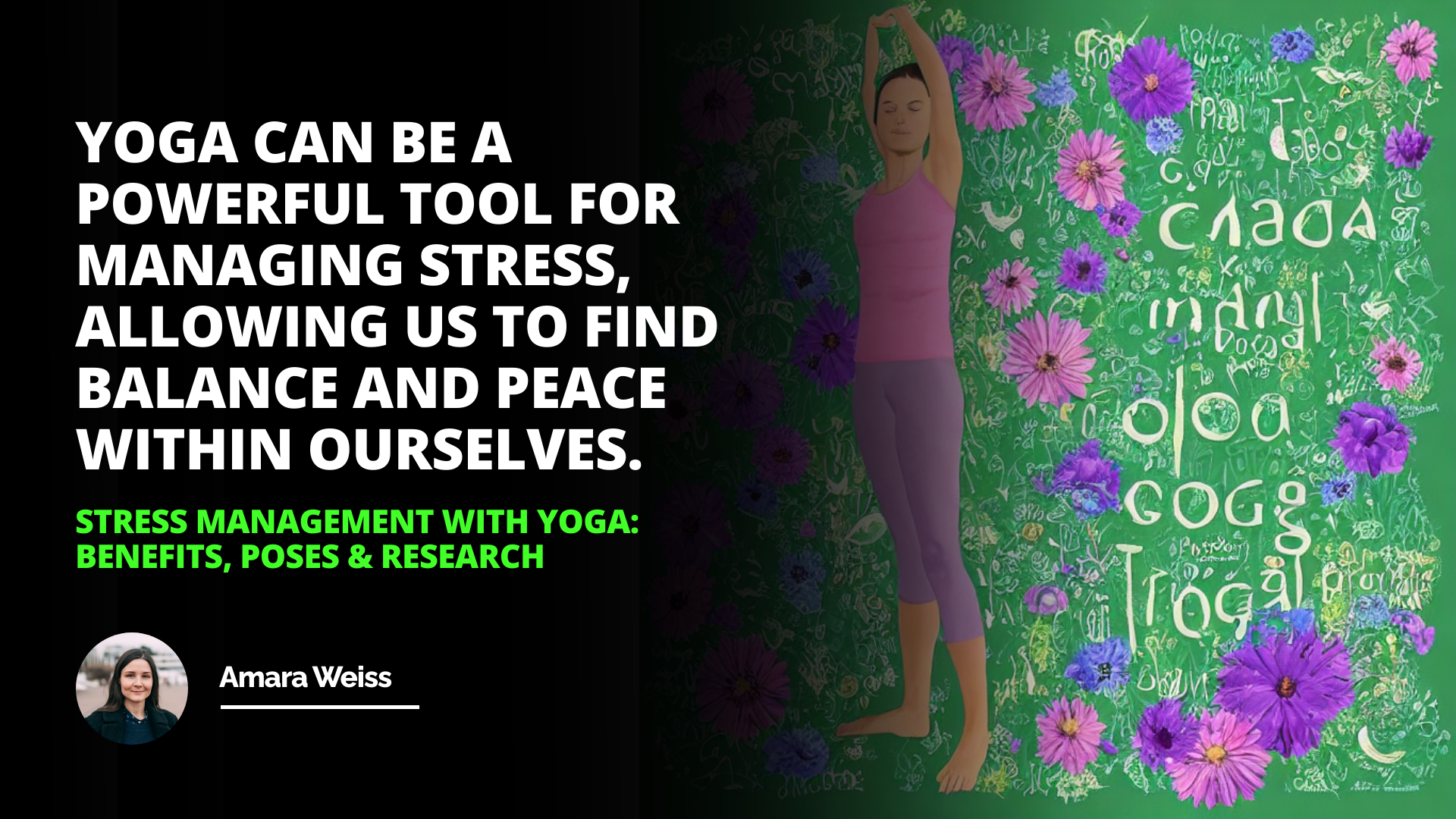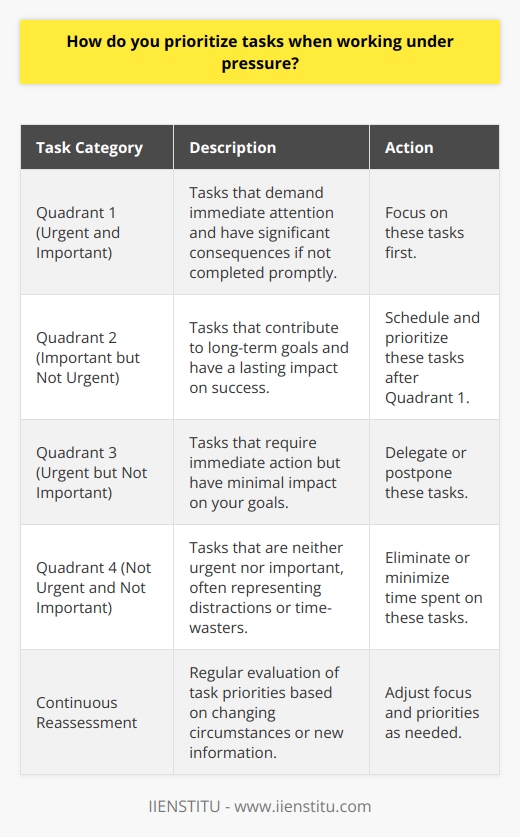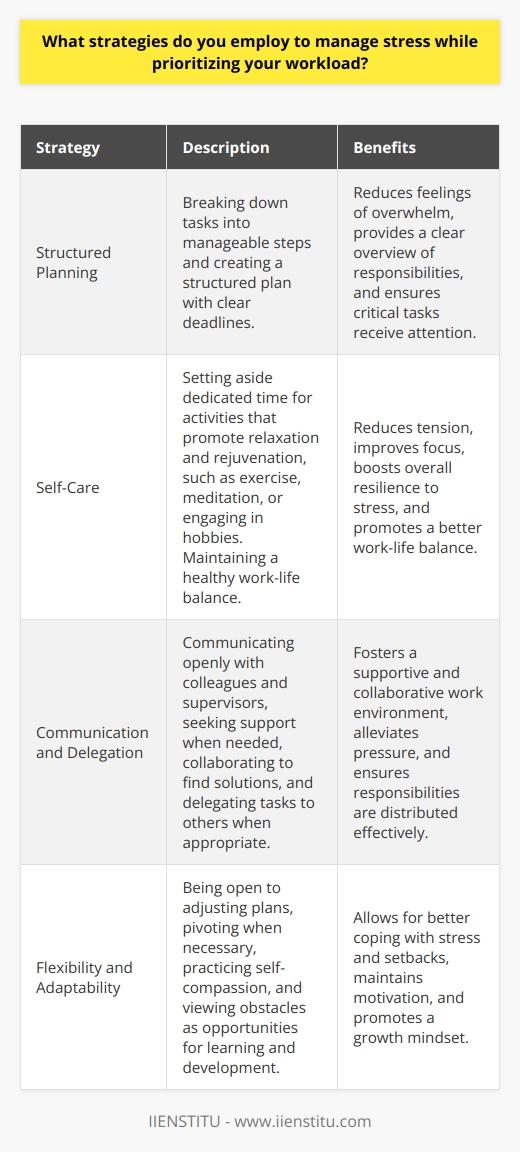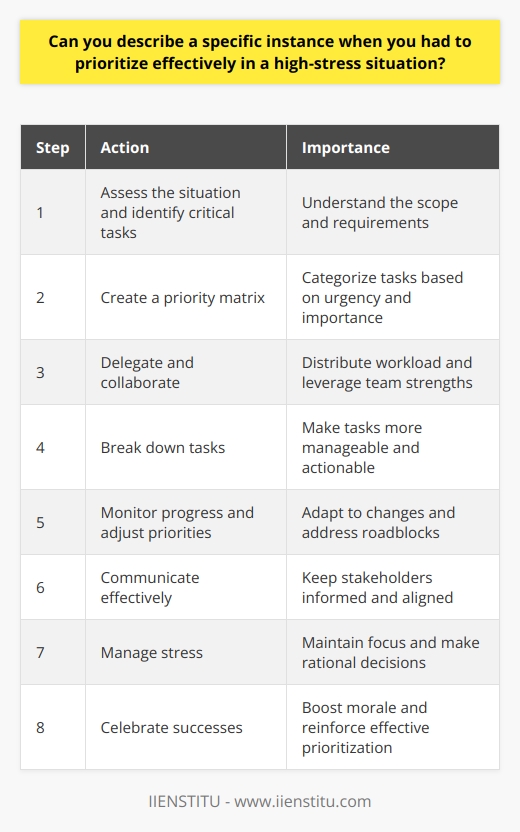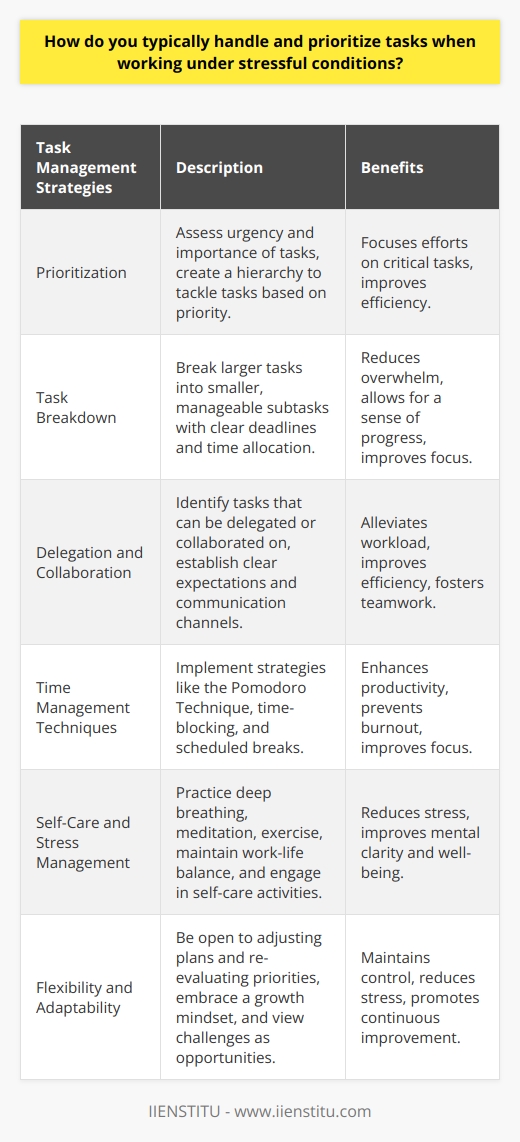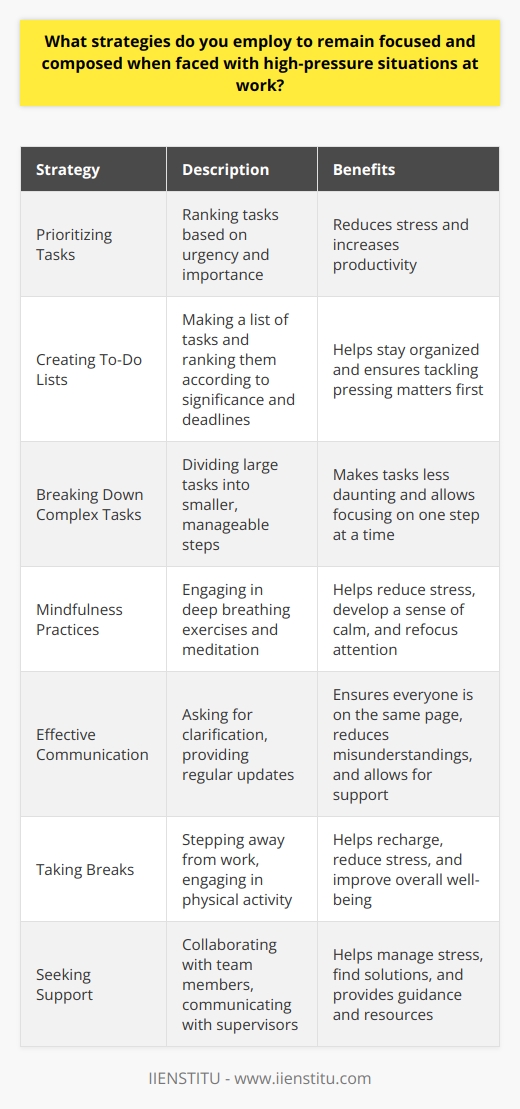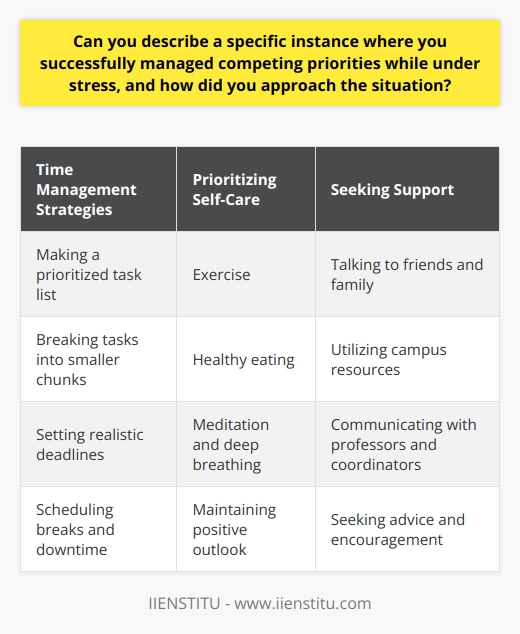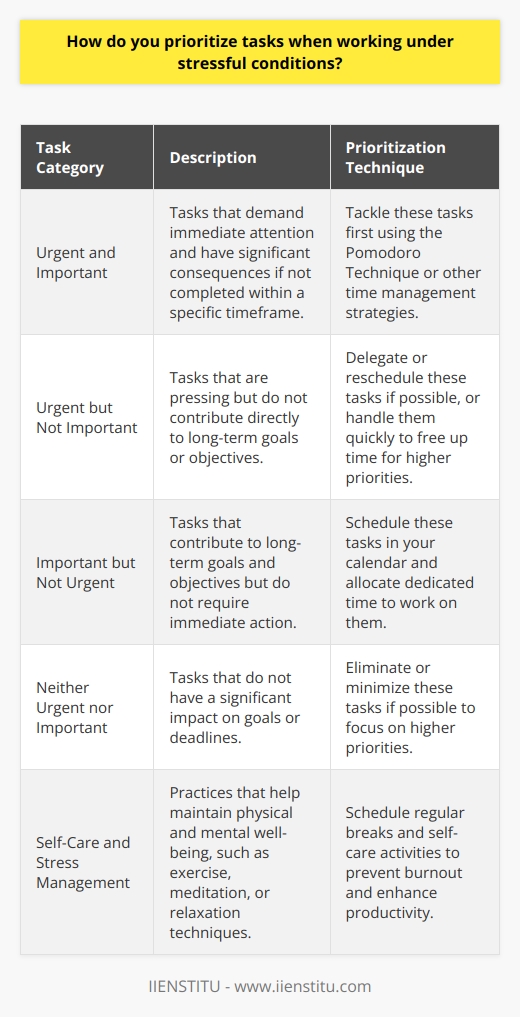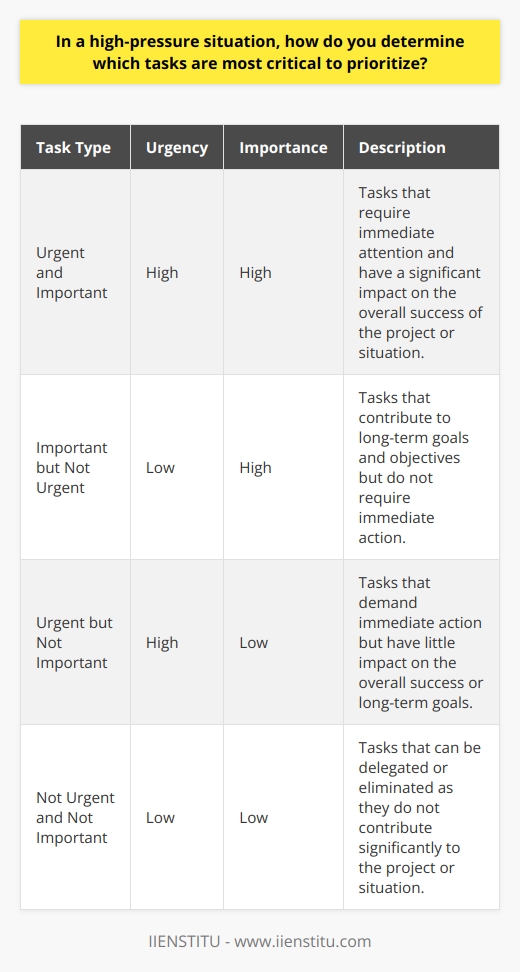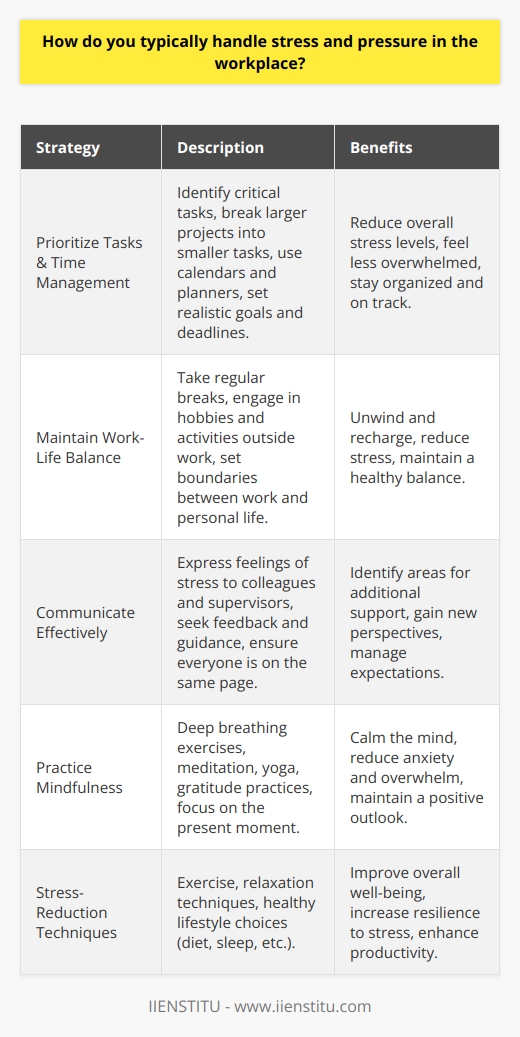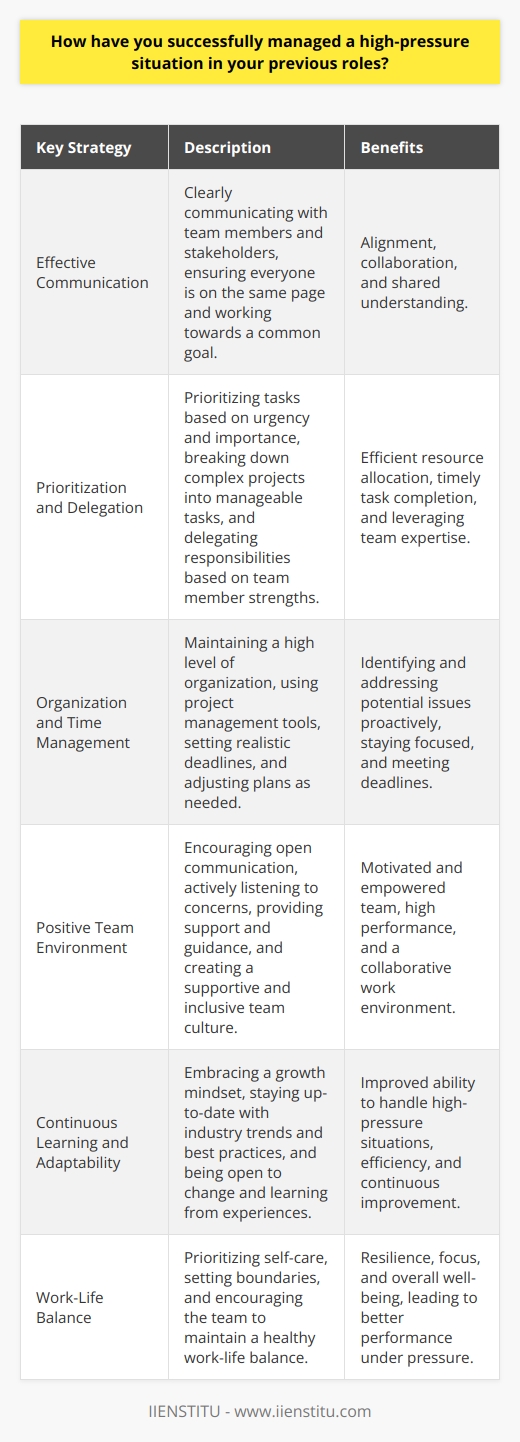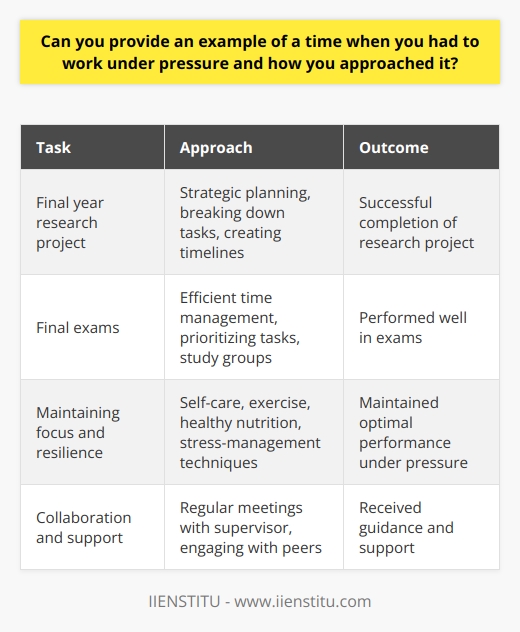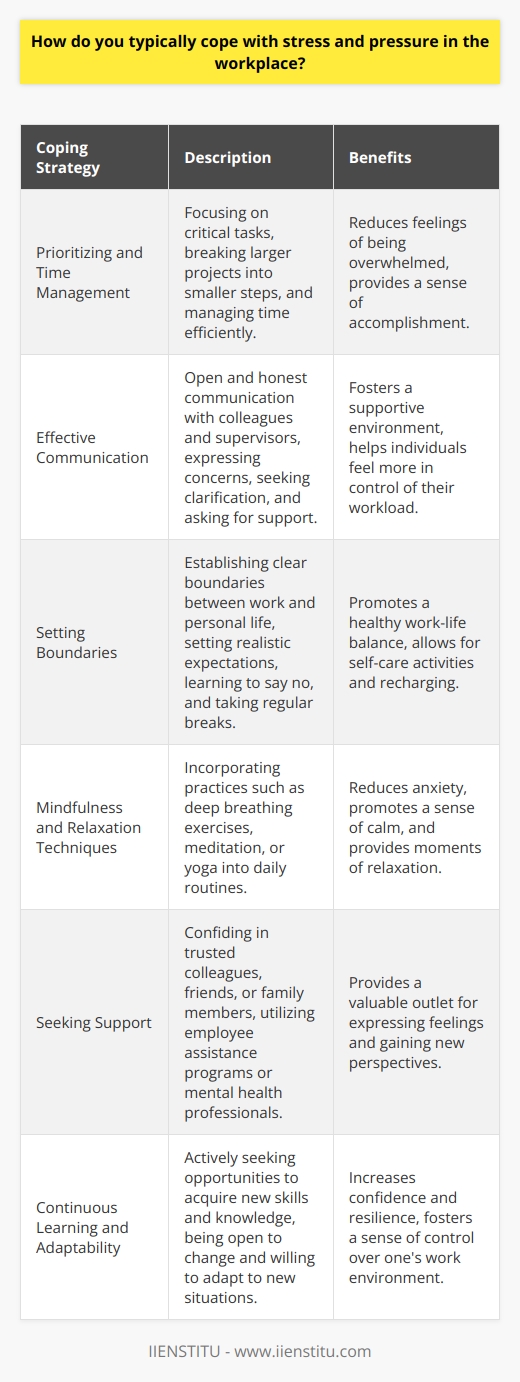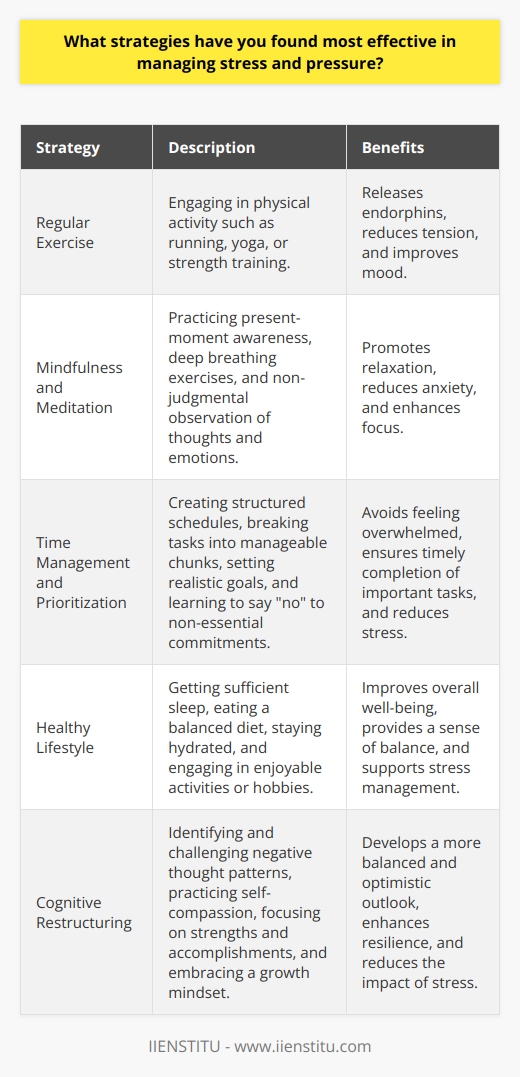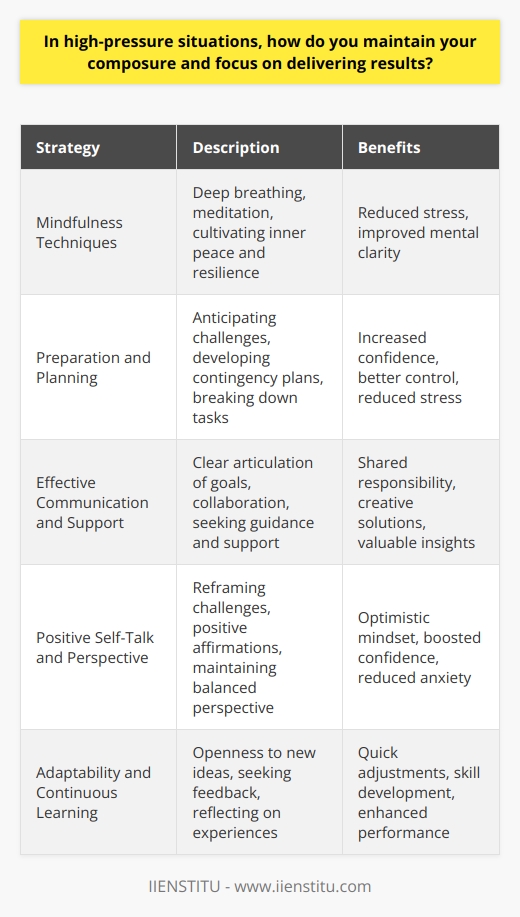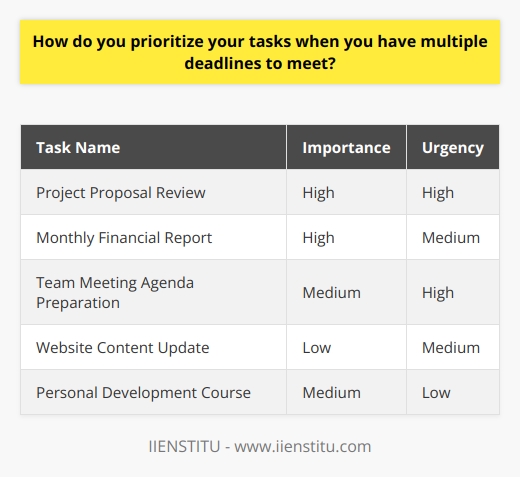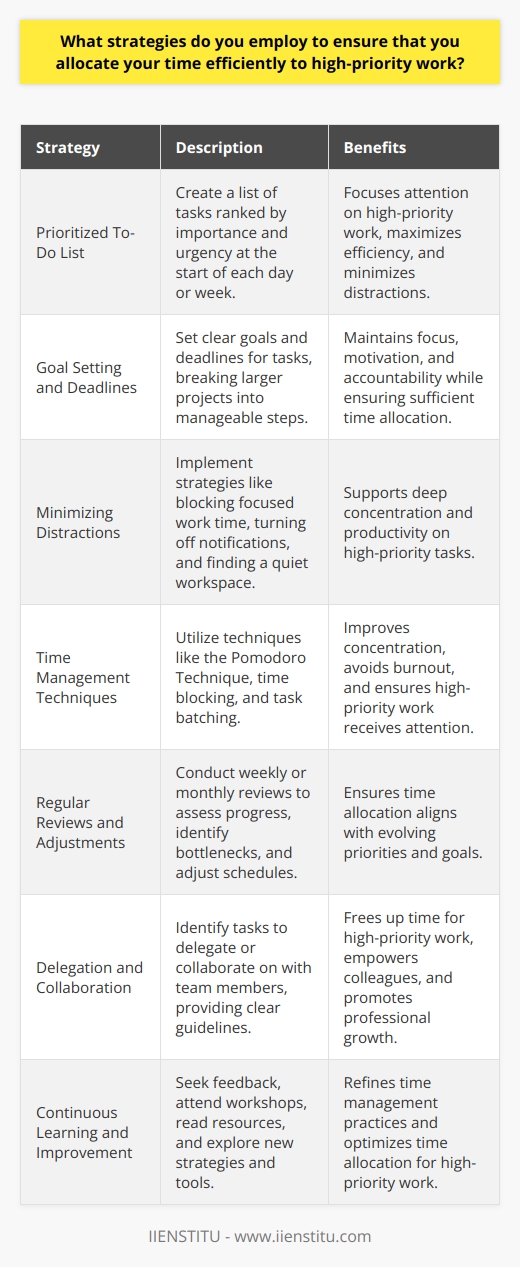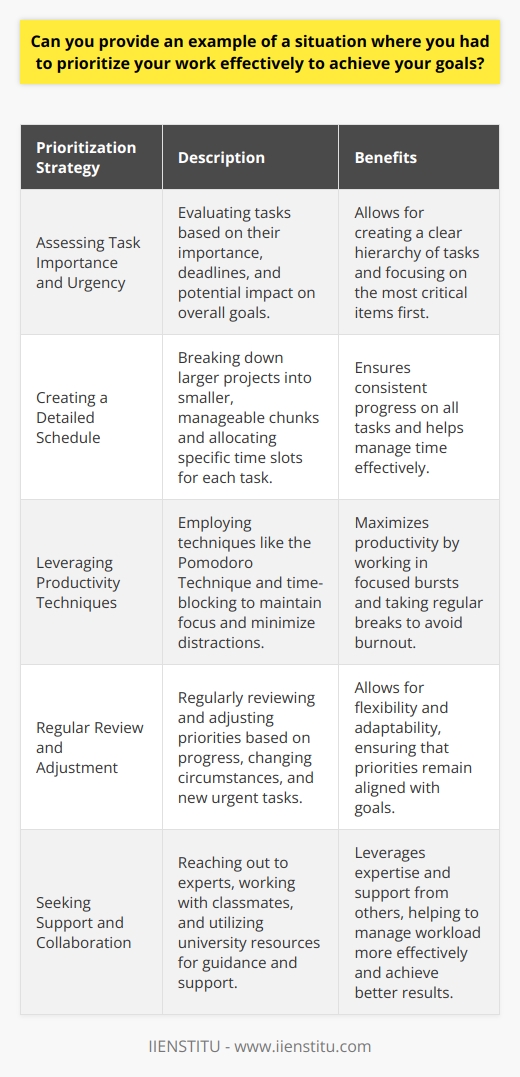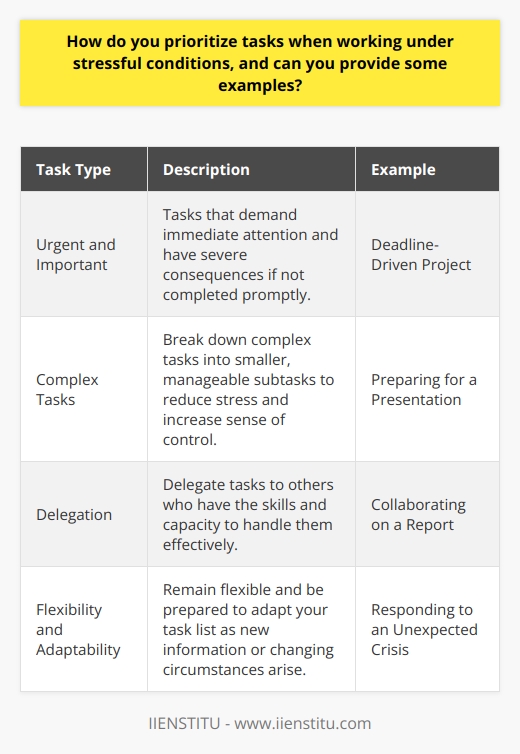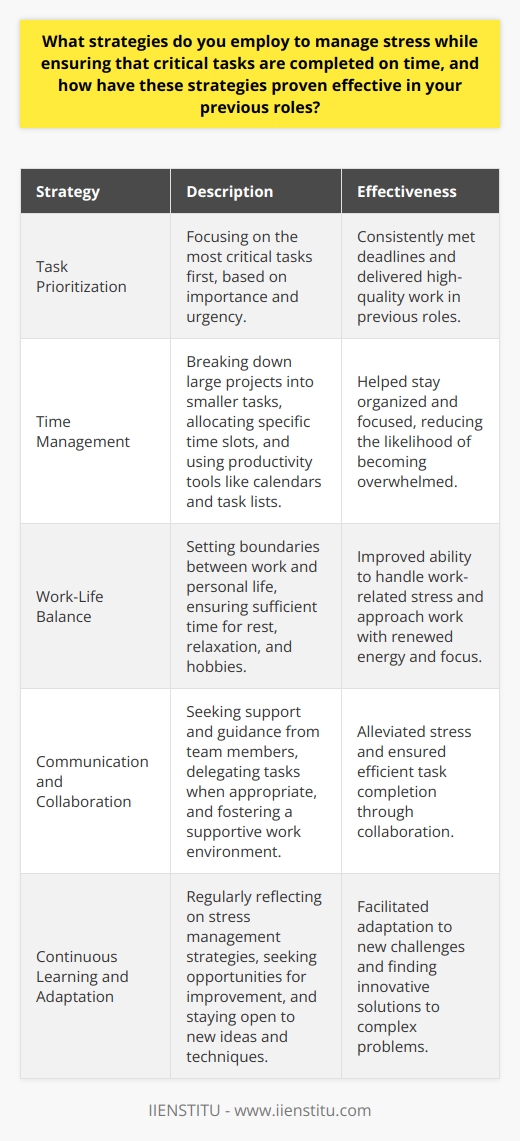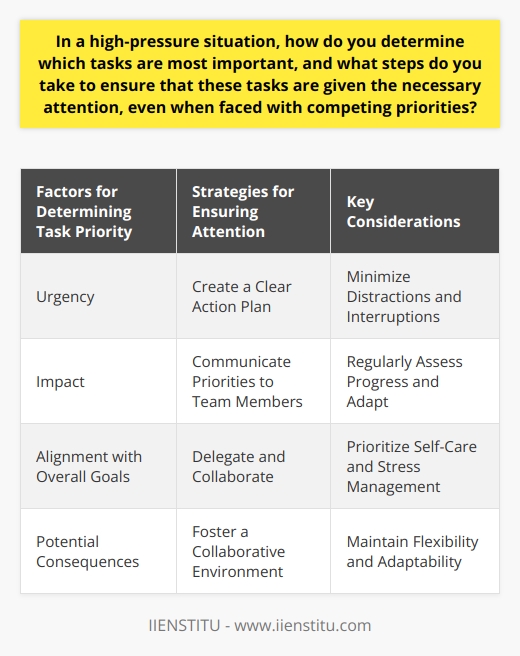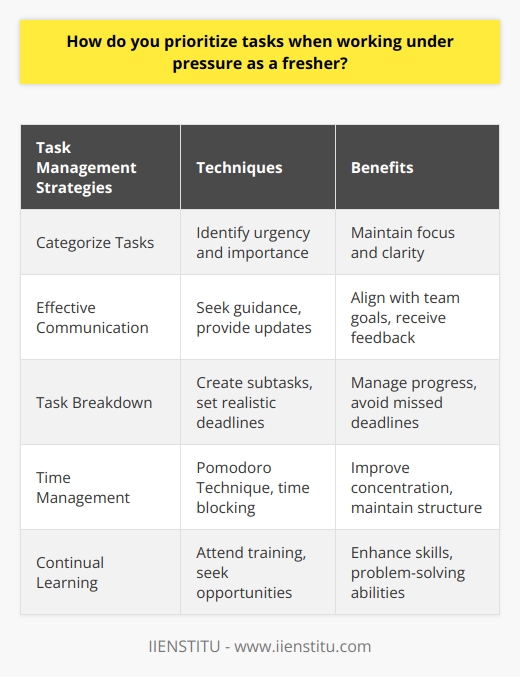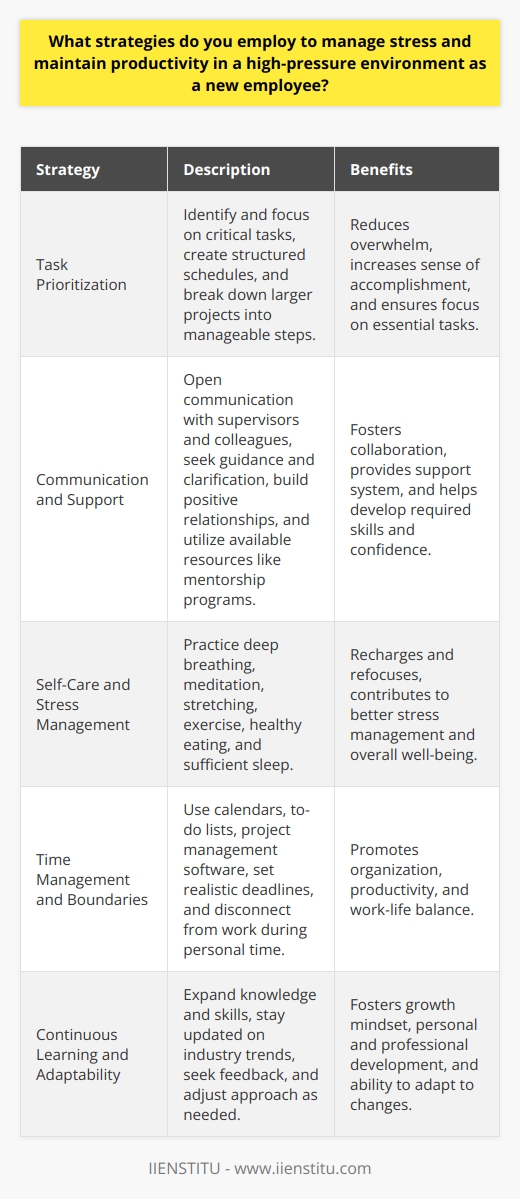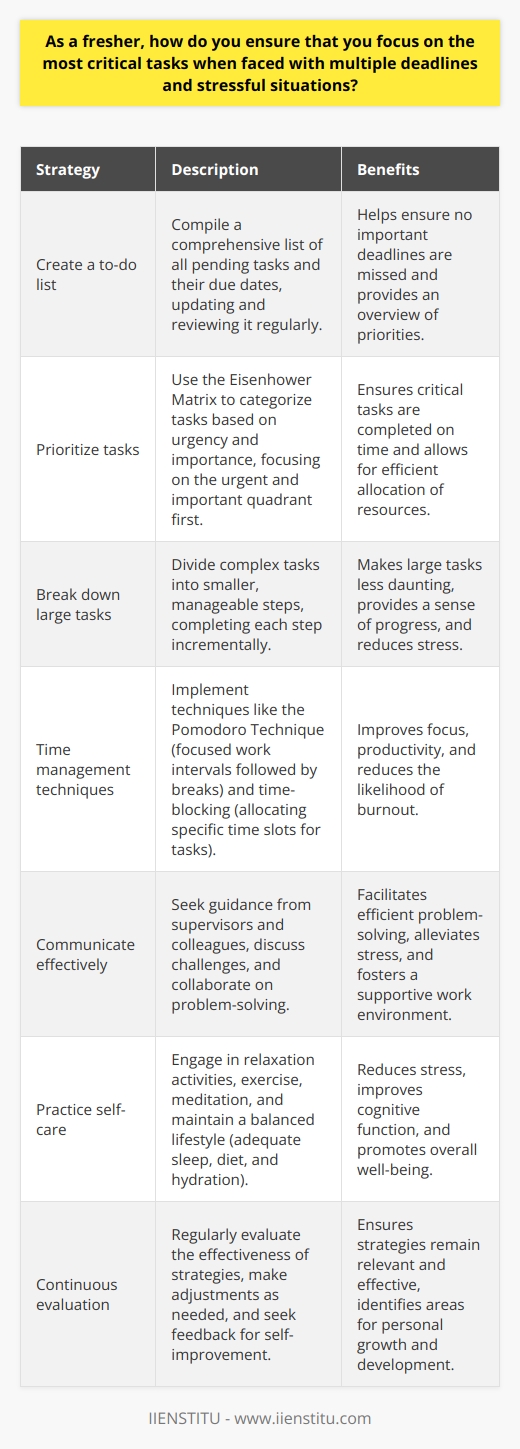In today's fast-paced professional world, being able to effectively prioritize tasks and projects is crucial for success. Inevitably, stress and pressure can arise, making it even more challenging to stay focused and organized.
As an HR expert, I understand the significance of assessing candidates' ability to prioritize under stress. In this article, we will explore why this interview question is asked, the purpose behind it, the interview level at which it is typically raised, and what kind of answer employers expect from candidates.
Moreover, we will delve into possible answers to consider and offer valuable insights into successfully managing priorities under stressful circumstances.
Why is this interview question asked: How Do You Prioritize Under Stress?
The question, "How do you prioritize under stress?" is posed in interviews to assess a candidate's ability to handle and manage workload effectively when confronted with challenging situations.
It gives recruiters valuable insights into the candidate's resilience, adaptability, and problem-solving skills, all of which are highly desired in dynamic work environments.
Employers want to ensure that the individual they hire can remain focused amidst pressure and continue meeting deadlines without sacrificing the quality of their work.
The purpose of the question
The purpose of this interview question is twofold.
Interview Question: How Do You Handle Time Management Interruptions?
Interview Question: Which Time Management Tool Do You Rely On Most?
Firstly, it seeks to determine whether a candidate can handle the demands of a role that often involves juggling multiple tasks, tight deadlines, and unexpected obstacles.
Secondly, it aims to uncover the candidate's strategies for prioritizing tasks under duress, providing valuable insight into their organizational and decision-making skills.
At what interview level is it asked?
The question "How do you prioritize under stress?" is typically asked at multiple levels of an interview process, ranging from entry-level to leadership positions.
Related Course: Leadership Course Online
Although the complexity of stressors and responsibilities may vary depending on the job level, the ability to prioritize remains a crucial skill across all positions.
Hiring managers want to ensure that candidates possess the necessary skills to handle stress at any level, making this question relevant regardless of the job title.
What kind of answer is expected from the candidate?
When answering this question, candidates are expected to demonstrate a clear understanding of how they handle stress and maintain productivity while managing competing priorities. Employers seek candidates who can articulate effective strategies to prioritize tasks, maintain focus, and proactively manage their workload.
It is important for candidates to showcase their ability to remain calm under pressure and provide examples of situations where they successfully juggled multiple responsibilities, met deadlines, and achieved desired outcomes.
Possible answers to consider
Identify and evaluate: Start by assessing the urgency and importance of each task or project. Consider the potential impact, deadlines, and consequences of not completing specific tasks. This evaluation helps in determining the order in which tasks need to be addressed.
Break it down: Divide larger projects or tasks into smaller, manageable steps. This allows for easier prioritization, as smaller tasks can be completed one at a time, reducing feelings of overwhelm.
Utilize prioritization frameworks: Explore established prioritization frameworks such as the Eisenhower Matrix, where tasks are categorized based on urgency and importance. This helps in identifying and focusing on the most critical tasks before addressing less urgent ones.
Communicate and negotiate: If facing an overwhelming workload, open communication with your supervisor or team members can help prioritize and redistribute tasks. Collaboratively determining priorities can alleviate stress and ensure a more balanced workload.
Time management techniques: Employ time-blocking, setting deadlines, and utilizing scheduling tools to enhance productivity. Breaking tasks into smaller time blocks promotes focus and helps accomplish more within specific time frames.
Self-care and stress management: Prioritize activities that support your well-being, such as exercise, sufficient rest, and maintaining a healthy work-life balance. Taking care of yourself reduces stress levels and enhances your ability to prioritize tasks optimally.
Related Course: Free Time Management Course
Related Course: Free Stress Management Course
What to consider when answering
When responding to this question, it is essential to strike a balance between demonstrating your ability to handle stress while also acknowledging the importance of maintaining quality and focus.
Emphasize adaptability, time management skills, and the ability to remain composed when unexpected situations arise. Share specific examples that highlight successful management of priorities under stressful circumstances, reinforcing your credibility and experience in handling similar situations.
The ability to prioritize effectively under stress is a highly sought-after skill that distinguishes exceptional professionals.
By providing a well-thought-out answer to the question "How do you prioritize under stress?" during an interview, candidates can showcase their problem-solving abilities, resilience, and capacity to deliver outstanding results even during challenging times.
Employing strategic prioritization techniques, fostering effective communication, and prioritizing self-care contribute to maintaining productivity and achieving success amidst stressful situations.
Remember, with the right mindset and proven tactics, you can thrive under stress and excel in any work environment.
Factors that Influence Prioritization Under Stress
Strategies for Effective Prioritization in Stressful Situations
Impact of Different Prioritization Techniques on Stress Levels
Similar interview questions:
Multiple Choice: What is a common strategy for prioritizing tasks when under stress?
a) Tackling the most urgent tasks first
b) Completing tasks in a random order
c) Ignoring tasks until stress is alleviatedTrue or False: Prioritizing tasks becomes easier when under stress.
Fill in the Blank: What is one effective technique for prioritizing tasks during stressful situations?
Short Answer: Describe a situation where you successfully prioritized tasks under stress and the outcome.
Matching: Match the appropriate strategies for prioritizing under stress:
i) Procrastinating until stress is reduced
ii) Using a to-do list or task management tool
iii) Delegating less important tasks to othersOpinion-based: In your opinion, is it better to prioritize tasks differently when under stress compared to a relaxed state? Why or why not?
Explain: How does a person's ability to prioritize change when dealing with high levels of stress?
Scenario-based: Imagine you have multiple assignments due within a short timeframe. Explain how you would prioritize these tasks while under stress.
Ranking: List three techniques for effective prioritization under stress, from most to least effective in your opinion.
Memory recall: Try to remember and recount a time when you faced a stressful situation and successfully managed to prioritize tasks. Describe the steps you took to achieve this.
